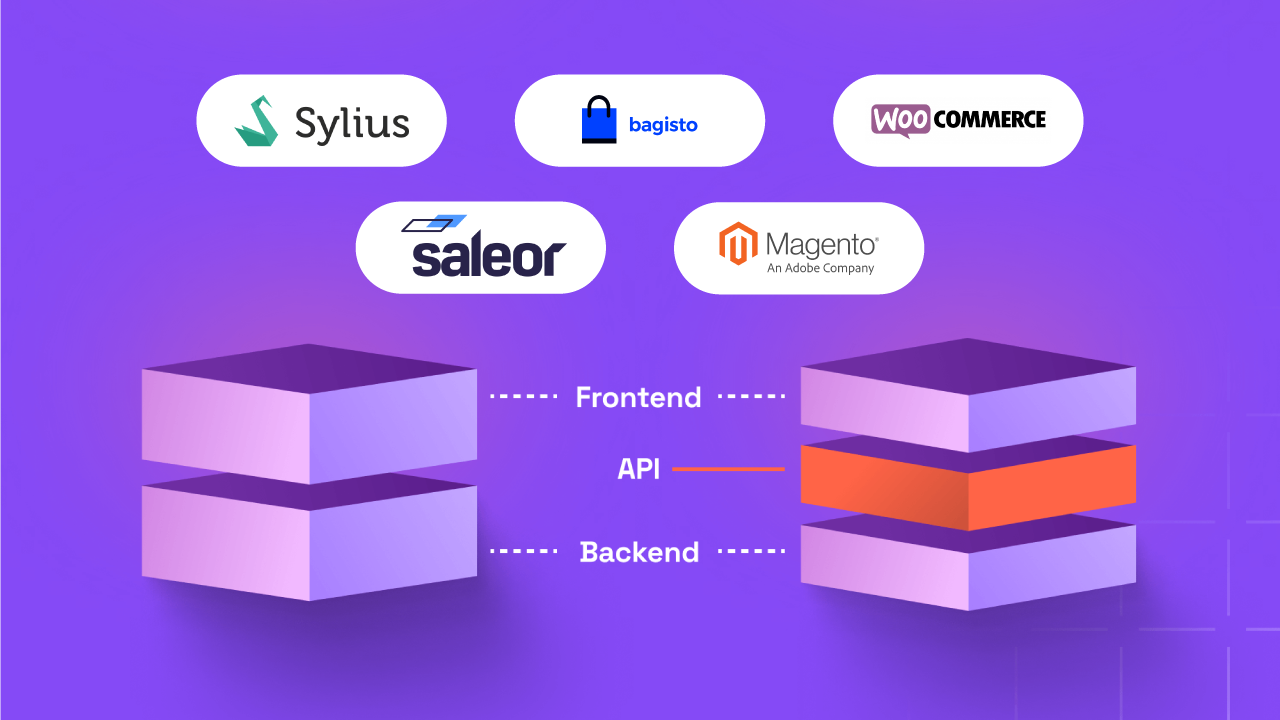Understanding the Ecosystem of a Hyperlocal Delivery Management System

Convenience and speed are two game-changers in the eCommerce industry. Make it easy for people to buy and deliver them fast. These are the two things I can bet most customers want.
With that said, a Hyperlocal delivery management system has become an important piece of the tech stack for many eCommerce brands. These systems are designed to expedite the delivery of goods and services within a localized area and have become crucial in meeting the ever-growing consumer demand for rapid service.
The pandemic has further accelerated this trend, underscoring the need for swift, efficient, and contactless delivery solutions. Research shows that the hyperlocal delivery services market is projected to grow with a 14.9% CAGR and amount to USD 5,188.60 billion by 2030. This proves the importance of having a reliable, robust, and functionality-driven software solution that automates and optimizes processes and empowers people in the hyperlocal business ecosystem.
Reading Suggestion: What is Hyperlocal eCommerce
Now the question is: what powers a good hyperlocal delivery management system?
Let’s dive into it!
What Constitutes a Hyperlocal Delivery Ecosystem?
At its core, a hyperlocal delivery ecosystem encompasses various components that seamlessly work together to provide quick and efficient service. The key elements include:
The Store Types: the Starting Point
Store types vary significantly, encompassing everything from stores dedicated solely to online orders to large warehouses and traditional corner shops. Each store serves a pivotal role in the ecosystem, addressing different aspects such as storage, immediate access to goods, and efficient order processing. These varying store formats ensure that the hyperlocal delivery system is versatile and capable of handling diverse customer demands.
Order Management System (OMS) : The Operational Brains
This manages the influx of orders, tracks them, and ensures they are processed efficiently. Modern OMSs, often powered by AI, play a crucial role in predicting stock requirements and analyzing customer purchase patterns. This not only streamlines the order processing but also aids in inventory management, making the system more responsive to market demands.
Warehouse Management System (WMS): The Backbone of Inventory
This focuses on inventory management and ensures a balance between supply and demand. These systems are intricately linked with the OMS, allowing for real-time updates on stock levels and facilitating accurate order fulfillment. This integration is key to maintaining operational efficiency and minimizing delays in the delivery process.
Transport Management System(TMS): Ensuring Efficient Delivery
The Transport Management System (TMS) comes into play for route planning and delivery execution. It utilizes advanced technologies like GPS and real-time traffic data to optimize delivery routes, significantly reducing delivery times and enhancing customer satisfaction. The TMS is vital in ensuring that deliveries are not just timely but also cost-effective.
Fleet: The On-Ground Delivery Force
The fleet is the face of the delivery system, interfacing directly with the customers and playing a crucial role in maintaining service standards.
A Detailed View of Hyperlocal Delivery Models
Let’s take a look at some popular delivery models in hyperlocal eCommerce.
Single Store Model: Catering to Established Businesses
The Single Store Model is tailored for established stores with a strong customer base. These businesses leverage dedicated apps for order placement and delivery with a dedicated fleet of riders. This model is prevalent in supermarket chains and independent high-demand stores, where maintaining a direct connection with customers is essential.
Store Pick Model: Enhancing Customer Convenience
The Store Pick Model offers a unique blend of online convenience and offline fulfillment. Customers can place orders online and pick them up at the store, thus avoiding wait times and queues. This model is particularly effective in streamlining the in-store experience and is favored by businesses aiming to enhance customer convenience.
Hybrid Model: Offering Flexibility and Choice
The Hybrid Model combines the benefits of both home delivery and in-store pickups, catering to a broader range of customer preferences. Its versatility lies in its ability to adapt, utilizing both dedicated and floating fleets to meet varying customer demands. It’s a popular choice for businesses seeking to provide multiple shopping options to their customers.
Aggregator Model: Bridging Businesses and Customers
The Aggregator Model plays a pivotal role in expanding market reach without significant investment in infrastructure. Acting as intermediaries, these platforms connect customers with various stores, exemplified by food delivery services like Zomato. This model is particularly beneficial for businesses looking to extend their reach without the complexities of managing a delivery system.
Challenges in Hyperlocal Delivery Management
One of the pressing challenges in the fast-evolving world of hyperlocal delivery is managing the efficiency and reliability of the delivery process. Just as in hyperlocal eCommerce, where quick and convenient delivery is paramount, hyperlocal delivery systems face similar pressures.
The pandemic has significantly accelerated the shift towards these systems, highlighting the need for swift and contactless deliveries. This shift has brought its own set of challenges, such as managing an efficient delivery workforce, ensuring effective route management, and maintaining flexibility in delivery operations.
Evolving Consumer Expectations
Consumer preferences are continuously evolving, with a growing demand for faster delivery services. Hyperlocal delivery systems must adapt to these changing needs while managing the increased operational costs associated with quicker deliveries.
For example, in the U.S, studies have shown that a significant portion of consumers are willing to pay more for faster delivery, but their willingness decreases with higher surcharges. This balance between consumer expectations and the cost implications for businesses is a delicate one.
Addressing Inefficiencies
Inefficient routing and legacy software systems are other critical challenges. Traditional software solutions often fall short in a fast-paced environment, leading to problems like improper load allocation and inefficient route selection. Moreover, the rising volumes of trips due to poor route planning and manual operational approaches add to the complexities. Hyperlocal delivery systems, therefore, need to leverage advanced technologies for intelligent route planning and real-time updates to optimize their operations.
Integrating with Third-Party Logistics Providers
Another challenge lies in integrating third-party logistics providers into the existing ecosystem. Ensuring on-time delivery pick-ups, efficient allocation of delivery products, and real-time tracking are all essential for smooth operations. This integration requires transparency and effective communication between in-house teams and third-party providers to avoid disruptions in the delivery process.
Scaling During Peak Times
Hyperlocal delivery systems also face the challenge of scaling their operations during peak business times, such as holidays or festivals. A sudden surge in demand can strain logistics resources, leading to longer delivery times and increased chances of missed deliveries. Adaptable software solutions are needed to integrate new delivery agents quickly and distribute deliveries efficiently across different locations.
Ensuring Timely and Accurate Deliveries
Finally, maintaining accurate and dynamic Estimated Time of Arrivals (ETAs) is crucial in meeting customer expectations. Traditional software often fails to provide live updates, leading to delays and dissatisfaction among consumers. Hyperlocal delivery systems must employ smart route planning, load allocation, and real-time monitoring to ensure timely and cost-effective deliveries.
Addressing Hyperlocal Delivery Challenges with Technological Innovations
Given the challenges in hyperlocal delivery and eCommerce, here are some solutions that help to address these needs and are needed to successfully implement this system.
Hyperlocal Delivery Software with Advanced Routing Solutions
Hyperlocal delivery solutions uses AI and machine learning to offer advanced routing capabilities, tailored to a variety of business needs. From accurate delivery address mapping to adapting routes based on real-time traffic, these systems consider a myriad of factors like vehicle type, capacity, and the nature of the consignment. This level of customization in route planning allows for specific vehicle allocation and dynamic order clubbing, something that is nearly impossible to accomplish manually with the same level of efficiency.
Tracker Modules for Enhanced Customer Visibility and Communication
In-built real-time tracker modules provide both managers and customers with a clear view of delivery progress. This feature is particularly crucial for quick delivery services, where customers are keenly interested in the progress and direction of their orders. Furthermore, these systems streamline customer communication by integrating feedback, alerts, and order confirmations within a single platform, eliminating the need for separate apps.
Optimization Software for Scalability
Optimizing the number of orders per vehicle and maximizing vehicle capacity allows businesses to handle more orders with fewer resources. This approach to optimization is a key factor in enabling businesses to amplify their revenue without necessarily increasing the number of trips or riders.
Wrapping It Up
The emergence of hyperlocal eCommerce delivery software has revolutionized business operations in our rapidly advancing eCommerce space. This innovation extends beyond providing a swift and convenient shopping experience; it empowers small businesses, enabling them to soar in a highly competitive environment.
As the eCommerce sector continues to evolve, recognizing the critical role of hyperlocal eCommerce delivery software becomes essential. This pivotal tool is the driving force behind speedy and effortless deliveries. Embracing these technological advancements is key for businesses aiming to distinguish themselves in the bustling digital marketplace.
Connect with experts at CODUP for top-notch eCommerce development services.



